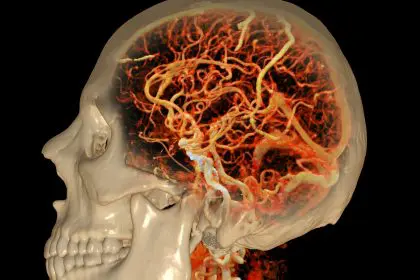The transition through menopause marks a profound shift in a woman’s physiology, with hormonal changes that extend far beyond reproductive function. As estrogen levels decline, the body’s ability to absorb, utilize, and retain certain minerals undergoes significant changes. While calcium and vitamin D rightfully receive attention for postmenopausal bone health, several equally important minerals often remain in their shadow, despite playing critical roles in addressing the unique health challenges women face after menopause.
These overlooked minerals become increasingly essential during the postmenopausal years, influencing everything from cardiovascular health and bone density to energy production and neurological function. Understanding these nutritional needs represents a crucial aspect of comprehensive postmenopausal care, potentially addressing many of the most challenging symptoms and health risks that emerge during this life stage.
The mineral-menopause connection
The relationship between menopause and mineral requirements is bidirectional and complex. Declining estrogen directly affects how the body handles minerals, while suboptimal mineral status can exacerbate many menopausal and postmenopausal symptoms.
Estrogen plays a significant role in mineral absorption in the intestines, mineral utilization within cells, and mineral retention in tissues, particularly bones. As estrogen levels drop during and after menopause, these processes become less efficient, creating increased needs for certain minerals to maintain the same level of physiological function.
Simultaneously, hormonal changes alter kidney function, sweat composition, and digestive efficiency—all systems involved in mineral balance. This creates a situation where the body requires more of certain minerals precisely when it becomes less efficient at managing them.
Research increasingly indicates that mineral imbalances contribute to many classic menopausal and postmenopausal symptoms that are often attributed solely to hormone changes. Hot flashes, sleep disturbances, mood changes, and fatigue may all have mineral components that, when addressed, can significantly improve quality of life during this transition.
1. Magnesium: The master controller of postmenopausal wellbeing
Magnesium deserves recognition as perhaps the most critical yet underappreciated mineral for postmenopausal women. This multifunctional mineral serves as a cofactor in over 300 enzymatic reactions, many directly relevant to the health challenges that emerge after menopause.
The relationship between magnesium and estrogen creates a challenging situation during the menopausal transition. Estrogen helps regulate magnesium utilization and retention, meaning that declining estrogen levels can impair magnesium status even when intake remains constant. Simultaneously, magnesium helps modulate the body’s response to fluctuating hormones, creating a circular relationship where magnesium becomes more important precisely when it becomes harder to maintain.
Bone health concerns typically dominate postmenopausal nutritional discussions, with calcium and vitamin D receiving most of the attention. However, magnesium plays an equally vital role in bone metabolism that becomes increasingly important after menopause. While calcium provides structural density to bones, magnesium determines how well that calcium is incorporated into bone matrix rather than depositing in soft tissues like arteries or joints.
After menopause, the risk of inappropriate calcium deposition increases significantly, potentially contributing to both osteoporosis and cardiovascular calcification simultaneously. Magnesium helps direct calcium to bones while preventing its accumulation in arteries, kidneys, and other soft tissues. Research indicates that magnesium intake may be as important as calcium for postmenopausal bone density, with some studies suggesting that calcium supplementation without adequate magnesium may even be counterproductive.
Cardiovascular protection represents another crucial function of magnesium that takes on heightened importance after menopause. Premenopausal women typically enjoy significant protection from heart disease compared to age-matched men, an advantage that diminishes after menopause. Magnesium helps maintain this protection through multiple mechanisms:
It functions as a natural calcium channel blocker, helping regulate blood pressure by relaxing vascular smooth muscle. This becomes particularly important as blood vessels naturally stiffen with age and lose the protective effects of estrogen.
Magnesium helps maintain healthy endothelial function—the critical inner lining of blood vessels that regulates blood flow, inflammation, and clotting risk. Endothelial function typically declines after menopause, a change that adequate magnesium can help mitigate.
This mineral also plays a crucial role in maintaining healthy blood lipid profiles, helping reduce LDL cholesterol oxidation while supporting healthy HDL levels—factors that become more challenging to maintain after menopause.
Insulin sensitivity represents another area where magnesium becomes increasingly valuable after menopause. Women typically experience a significant decrease in insulin sensitivity during and after the menopausal transition, contributing to increased risk of weight gain, metabolic syndrome, and type 2 diabetes. Magnesium serves as a key cofactor in carbohydrate metabolism, with research indicating that adequate levels can improve insulin response by 30% or more in women with suboptimal status.
Perhaps most immediately relevant to quality of life, magnesium helps regulate numerous aspects of neurological function that commonly become disrupted during and after menopause. It modulates neurotransmitter release, helps control the stress response through the hypothalamic-pituitary-adrenal axis, and regulates the body’s excitation threshold.
These functions translate to practical benefits for several of the most challenging postmenopausal symptoms:
Sleep disturbances affect up to 60% of postmenopausal women, with magnesium’s ability to regulate melatonin production and GABA activity offering significant relief in many cases.
Mood changes including irritability, anxiety, and depressive symptoms respond favorably to improved magnesium status, likely through its modulation of serotonin and dopamine activity.
Migraine headaches, which often change in pattern or intensity after menopause, frequently improve with optimized magnesium levels due to its effects on cerebral blood vessels and neurotransmitter balance.
Despite these crucial functions, magnesium intake tends to decline with age, while requirements often increase. Dietary surveys consistently show that 60-80% of Americans consume less than optimal amounts of magnesium, with postmenopausal women particularly vulnerable to deficiency due to hormonal changes affecting utilization.
Absorption challenges further complicate this picture. Aging naturally reduces digestive efficiency, while many common medications used by postmenopausal women—including proton pump inhibitors, certain diuretics, and some osteoporosis medications—can significantly impair magnesium absorption or increase its excretion.
For postmenopausal women, magnesium-rich foods deserve special emphasis: dark leafy greens, unrefined grains, legumes, nuts (especially almonds), and seeds (particularly pumpkin seeds) provide bioavailable forms of this mineral. When supplementation is warranted, magnesium glycinate, malate, or threonate forms tend to offer superior absorption with minimal digestive side effects compared to oxide or citrate forms.
2. Boron: The bone and brain protector gaining recognition
Boron stands as perhaps the most overlooked essential trace mineral for postmenopausal women, despite growing evidence for its multifaceted role in addressing key health concerns that emerge during this life stage. This trace mineral, required in small but crucial amounts, interacts with several hormonal and metabolic pathways that take on heightened importance after menopause.
The relationship between boron and hormonal balance represents one of its most valuable yet underappreciated functions for postmenopausal women. Research indicates that boron helps modulate the body’s response to changing hormone levels in several ways:
It supports the conversion of vitamin D to its active form, which in turn helps regulate calcium metabolism and impacts both bone and immune function.
Boron influences the body’s ability to utilize and retain magnesium, creating synergistic effects between these two minerals.
Perhaps most intriguingly, boron appears to help optimize the body’s use of the limited estrogen available after menopause. It does this partly by supporting appropriate estrogen receptor sensitivity and by influencing the balance between different forms of estrogen metabolites, potentially favoring those with more beneficial effects.
Bone health benefits from boron through multiple mechanisms that become increasingly important after the menopausal transition. While most bone health discussions focus on calcium and vitamin D, boron plays several distinctive roles:
It enhances vitamin D metabolism, improving calcium utilization and bone mineral density maintenance.
Boron reduces urinary excretion of calcium and magnesium, helping retain these crucial bone minerals.
Research indicates that boron supports the function of osteoblasts (bone-building cells) while moderating the activity of osteoclasts (cells that break down bone tissue)—a balance that becomes skewed after menopause.
Most significantly, boron appears to help maintain bone flexibility and resilience, not just density. This may explain why research shows that adequate boron status correlates with reduced fracture risk beyond what would be expected from bone density measurements alone—suggesting it improves bone quality, not just quantity.
Cognitive function and brain health benefit substantially from optimal boron levels, addressing a significant concern for many postmenopausal women. Emerging research suggests several neuroprotective mechanisms:
Boron helps maintain proper cell membrane function in neurons, supporting efficient electrical signaling throughout the brain and nervous system.
It appears to enhance the availability of S-adenosyl methionine (SAMe), a compound involved in producing neurotransmitters that regulate mood and cognitive function.
Animal studies indicate that boron supplementation increases brain electrical activity, particularly in areas involved in attention, memory, and cognitive processing.
Human research shows associations between higher boron status and improved performance on tasks involving motor speed, dexterity, attention, and short-term memory—all cognitive domains that can be affected during and after menopause.
Inflammatory regulation represents another valuable function of boron that takes on increased importance after menopause. The menopausal transition often coincides with increases in inflammatory markers, contributing to joint discomfort, cardiovascular risk, and cognitive changes. Boron helps moderate this inflammatory shift through several mechanisms:
It downregulates the activity of specific enzymes involved in producing inflammatory compounds in the body.
Boron appears to help regulate nuclear factor-kappa B (NF-κB), a key mediator of inflammatory responses implicated in many age-related health concerns.
Some research indicates that adequate boron status correlates with lower levels of high-sensitivity C-reactive protein (hs-CRP), an important marker of systemic inflammation associated with cardiovascular and cognitive health.
Despite these benefits, boron rarely receives attention in typical dietary recommendations. No official RDA (Recommended Dietary Allowance) exists for boron, though research suggests a minimum intake of 3 mg daily, with potentially greater benefits at slightly higher levels for postmenopausal women.
Obtaining adequate boron presents challenges in modern diets. The mineral content of food depends heavily on soil conditions, with many agricultural regions showing declining boron levels. Additionally, highly processed foods contain minimal amounts of this nutrient. The richest dietary sources include:
Prunes and other dried fruits, particularly raisins and dates Avocados Nuts, especially almonds and walnuts Legumes, particularly chickpeas and lentils Apple cider vinegar Honey (sourced from plants grown in boron-rich soil)
For many postmenopausal women, particularly those with concerns about bone density, cognitive function, or inflammatory conditions, ensuring adequate boron intake through either strategic food choices or modest supplementation may provide benefits not achievable through standard mineral protocols focused only on calcium and vitamin D.
3. Manganese: The silent supporter of postmenopausal metabolism
Manganese represents one of the most underrecognized minerals for postmenopausal health, despite playing crucial roles in several physiological systems that become vulnerable during this life stage. This trace mineral functions as a cofactor for numerous enzymes involved in antioxidant protection, bone formation, energy production, and carbohydrate metabolism.
The relationship between manganese and bone health takes on particular importance after menopause, when the risk of osteoporosis significantly increases. While calcium and vitamin D rightfully receive attention for bone health, manganese plays several distinctive roles:
It serves as an essential cofactor for enzymes involved in the production of bone matrix components, including glycosaminoglycans and collagen.
Manganese activates several enzymes crucial for bone mineralization, helping ensure that calcium is properly incorporated into skeletal structures.
Research indicates that manganese deficiency can impair bone turnover and remodeling—the continuous process of bone renewal that becomes less efficient after menopause.
Studies have found correlations between adequate manganese levels and better maintenance of bone mineral density in postmenopausal women, independent of calcium and vitamin D status.
Antioxidant protection represents another vital function of manganese that becomes increasingly important after menopause. This mineral serves as a cofactor for superoxide dismutase (SOD), one of the body’s primary antioxidant enzymes. Declining estrogen after menopause typically correlates with increased oxidative stress throughout the body, potentially contributing to accelerated aging processes.
Manganese-dependent SOD specifically protects mitochondria—the cellular power plants that generate energy—from oxidative damage. This protection becomes particularly valuable after menopause, as mitochondrial function naturally declines with age and loses the protective effects of estrogen.
Research indicates that adequate manganese status can help maintain proper SOD activity, potentially reducing oxidative damage to tissues throughout the body. This may have particular relevance for preserving cognitive function, cardiovascular health, and skin vitality—all areas vulnerable to accelerated aging after menopause.
Glucose metabolism benefits significantly from optimal manganese levels, addressing a common concern for postmenopausal women. The menopausal transition typically coincides with decreased insulin sensitivity and changes in how the body processes carbohydrates. Manganese supports healthy glucose metabolism through several mechanisms:
It serves as a cofactor for enzymes involved in gluconeogenesis, the process by which the body produces glucose when needed.
Manganese activates enzymes that help cells properly utilize glucose for energy production.
Some research indicates that adequate manganese status correlates with better glucose tolerance and insulin sensitivity—factors that can influence energy levels, weight management, and diabetes risk after menopause.
Thyroid function represents another area where manganese plays a supporting yet significant role relevant to postmenopausal health. The menopausal transition often coincides with changes in thyroid hormone metabolism, with many women experiencing shifts in thyroid function that affect energy, weight, mood, and overall metabolic rate.
Manganese serves as a cofactor for enzymes involved in the production of thyroid hormones and helps regulate the conversion between different forms of these hormones in peripheral tissues. While not the primary mineral for thyroid health (selenium and iodine play more central roles), manganese provides important complementary support for maintaining optimal thyroid function during and after the menopausal transition.
Despite these important functions, manganese rarely receives attention in typical postmenopausal nutrition discussions. The typical adult requirement ranges from 1.8 to 2.3 mg daily, with evidence suggesting that needs may increase somewhat after menopause due to changes in utilization efficiency.
Obtaining adequate manganese presents challenges in certain dietary patterns. The richest dietary sources include:
Whole grains, particularly oats, brown rice, and quinoa Nuts and seeds, especially pine nuts and pumpkin seeds Legumes, including soybeans and chickpeas Leafy green vegetables Tea (particularly black tea) Dark chocolate
For many postmenopausal women, ensuring adequate manganese intake may require attention to dietary patterns, particularly as processed food consumption increases and whole grain intake decreases with age in many populations. While high-dose manganese supplementation is not recommended due to potential neurotoxicity concerns with excessive amounts, ensuring intake at the upper end of the recommended range may provide valuable support for bone, metabolic, and antioxidant health after menopause.
Synergistic relationships: How these minerals work together
Understanding the interrelationships between these minerals reveals why addressing them collectively offers greater benefits than focusing on any single nutrient. These minerals work together through multiple synergistic pathways particularly relevant to postmenopausal health.
Bone mineral matrix formation requires the coordinated action of all three minerals, with each playing distinctive yet complementary roles:
Magnesium influences bone crystal formation and size, with optimal levels promoting proper crystalline structure that balances density with flexibility.
Boron enhances mineral retention in bone tissue while supporting the enzyme activity needed for matrix protein formation.
Manganese activates enzymes involved in producing the organic components of bone matrix, particularly the glycosaminoglycans that give bone its resilient quality.
Research indicates that addressing these minerals together may improve bone quality metrics beyond mineral density alone, potentially reducing fracture risk more effectively than approaches focused solely on calcium and vitamin D.
Endocrine function benefits from the collective action of these minerals, helping moderate the challenges of hormonal transitions:
Magnesium supports healthy receptor sensitivity for multiple hormones, including insulin, thyroid hormones, and the limited estrogen available after menopause.
Boron appears to help optimize the activity and metabolism of several hormones, particularly vitamin D and estrogen.
Manganese influences enzyme systems involved in hormone production and conversion, particularly affecting thyroid function and insulin activity.
This combined mineral support helps maintain more stable hormonal function despite the significant changes in estrogen production, potentially easing the severity of menopausal symptoms and improving quality of life.
Oxidative stress protection involves all three minerals working through complementary pathways:
Magnesium preserves cellular energy production efficiency, reducing the excess free radical generation that occurs with suboptimal metabolic function.
Boron helps regulate inflammatory processes that would otherwise contribute to oxidative burden throughout the body.
Manganese directly activates superoxide dismutase, one of the primary enzymatic defenses against free radical damage.
Together, these minerals help counter the accelerated cellular aging that often accompanies the menopausal transition, supporting tissue function throughout the body.
Implementation strategies for postmenopausal women
Translating this nutritional knowledge into practical approaches requires considering several factors specific to postmenopausal physiology and lifestyle.
Dietary approaches generally provide the safest and most balanced method for improving mineral status. Particularly beneficial food patterns include:
Mediterranean-style diets rich in nuts, seeds, legumes, and dark green vegetables provide excellent sources of all three minerals along with complementary nutrients that enhance their absorption and utilization.
Strategic inclusion of mineral-rich foods rather than across-the-board increases in consumption allows for targeted improvement without excessive calorie intake—an important consideration as metabolic rate typically declines after menopause.
Attention to food preparation methods can significantly impact mineral availability, with soaking nuts and legumes, fermenting grains, and avoiding excessive processing all helping preserve and enhance mineral content.
Supplementation approaches may benefit many postmenopausal women, particularly those with absorption issues, restricted diets, or specific health concerns like osteopenia. Effective supplementation strategies include:
Timing supplements away from medications that might impair mineral absorption, particularly certain osteoporosis medications, thyroid hormones, and acid-blocking drugs commonly prescribed to older women.
Selecting chelated forms of these minerals (bound to amino acids like glycine) generally improves absorption and reduces the potential for gastrointestinal side effects compared to oxide or carbonate forms.
Starting with modest doses and gradually increasing as needed helps minimize adjustment symptoms and allows for assessing individual tolerance.
Lifestyle factors significantly influence how effectively the body utilizes these minerals:
Regular weight-bearing exercise enhances the bone-building effects of these minerals while improving insulin sensitivity and overall mineral utilization.
Stress management practices help reduce excessive mineral losses through urine and sweat that typically occur during chronic stress—a particularly important consideration during the often stressful menopausal transition.
Adequate hydration supports proper mineral transport and utilization throughout the body, with many women finding they need to consciously increase fluid intake as thirst sensation often diminishes with age.
Monitoring strategies can help ensure that mineral status is actually improving with dietary or supplemental interventions. While blood tests exist for these minerals, they don’t always accurately reflect tissue levels. More comprehensive assessment approaches include:
Tracking specific symptoms known to respond to improved mineral status, such as sleep quality, muscle cramps, bone health markers, and energy levels.
Periodic reassessment of key health markers influenced by these minerals, including blood pressure, glucose regulation, inflammatory markers, and bone density.
Working with healthcare providers knowledgeable about functional nutrition to interpret subtle signs of mineral imbalances before they manifest as clinical deficiencies.
The future of postmenopausal mineral research
The field of mineral nutrition for postmenopausal health continues to evolve, with several promising research directions:
Personalized mineral recommendations based on genetic factors, hormone levels, and individual metabolic patterns may eventually replace one-size-fits-all approaches, allowing for more targeted and effective mineral support.
Advanced bone quality assessment beyond conventional density scans may better evaluate how these minerals influence bone resilience and fracture resistance, potentially identifying women who would particularly benefit from targeted mineral support.
Research into the impact of these minerals on emerging health concerns for aging women, including cognitive maintenance, immune function, and microbiome health, continues to expand our understanding of their comprehensive benefits.
While calcium and vitamin D will continue to play important roles in postmenopausal health, growing evidence suggests that magnesium, boron, and manganese deserve equal attention in comprehensive health strategies. By addressing these often-overlooked minerals, women may find better solutions to many of the most challenging aspects of the menopausal transition and the years that follow.















